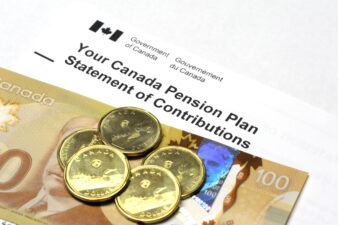Retirement is untested territory for future retirees and can bring anxiety as you near the golden years. Financial resources will play a vital role in overcoming this concern. The federal government exerts all efforts to motivate Canadians to save and invest for retirement.
No Canadian will retire penniless with retirement foundations such as the Canada Pension Plan (CPP), Old Age Security (OAS), and Guaranteed Income Supplement (GIS). Unfortunately, you can’t rely on the CPP, OAS, and GIS in retirement because they do not replace 100% of your pre-retirement income.
Generating additional income through the Registered Retirement Savings Plan (RRSP) is one way to secure your retirement and avoid financial dislocation. Besides the tax-free money growth, RRSP contributions reduce taxable income. RRSP framers had one objective: to promote saving for retirement.
Tool for retirement
The RRSP is a tool for retirement. Its salient feature is allowing your money or savings to grow while deferring paying taxes and contributing to the account. Remember that any investment income earned on income-producing assets is tax-deferred as long as it remains in your RRSP.
Most RRSP investors hold dividend stocks in their RRSPs for higher long-term returns and faster compounding of principal through dividend reinvesting. The choices on the TSX are plenty, but to be worry-free, Canadian Utilities (TSX:CU) and Bank of Montreal (TSX:BMO) are must-haves for future retirees.
Both can be your anchor stocks as you build a diversified dividend stock portfolio. You’d have a pair of dividend payers to deliver pension-like income throughout your sunset years.
First Dividend King
Canadian Utilities is Canada’s first Dividend King. Companies with 50 consecutive years of dividend increases earn this status. The $6.46 billion utility and energy infrastructure company became king in 2022. Management said earnings growth from CU’s regulated and long-term, contracted investments supports dividend growth.
In its three-year growth plan, the mid-year rate base should grow from $15.4 billion in 2023 to between $16.7 billion and $17.4 billion by year-end 2026. At $31.27 per share, CU pays a 5.74% dividend (quarterly payout). Assuming your RRSP contribution limit is the maximum or $31,560, the investment will grow to $98,665.10 in 20 years.
Dividend pioneer
BMO, Canada’s third-largest bank, is TSX’s dividend pioneer. The $94.66 billion bank started paying dividends in 1829, and the track record is now five years shy of 200 years. If you invest today, the share price is $130.48, while the dividend offer is 4.63%.
As of May 2024, BMO is the 15th largest bank in the U.S. by asset size. The Canadian big bank completed the acquisition of Bank of the West in February 2023. In addition to its strong position in three of the top five U.S. markets, BMO has a presence in 32 states. Its chief executive officer, Darryl White, said BMO is well-positioned to serve American and Canadian economies in a shifting global landscape.
Lock in the money
The general idea in RRSP investing is to lock in the money for years. When you retire and start withdrawing funds, the tax rate is marginal. Stocks like Canadian Utilities and National Bank should help secure your retirement.







